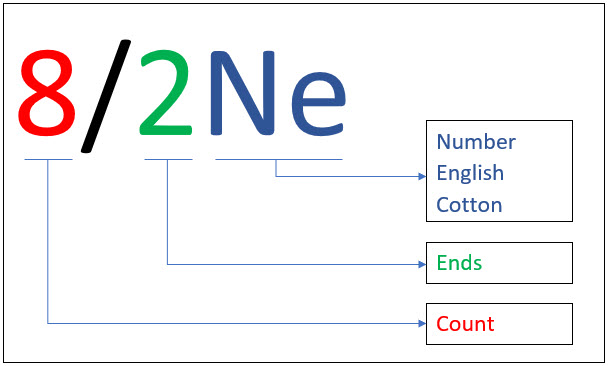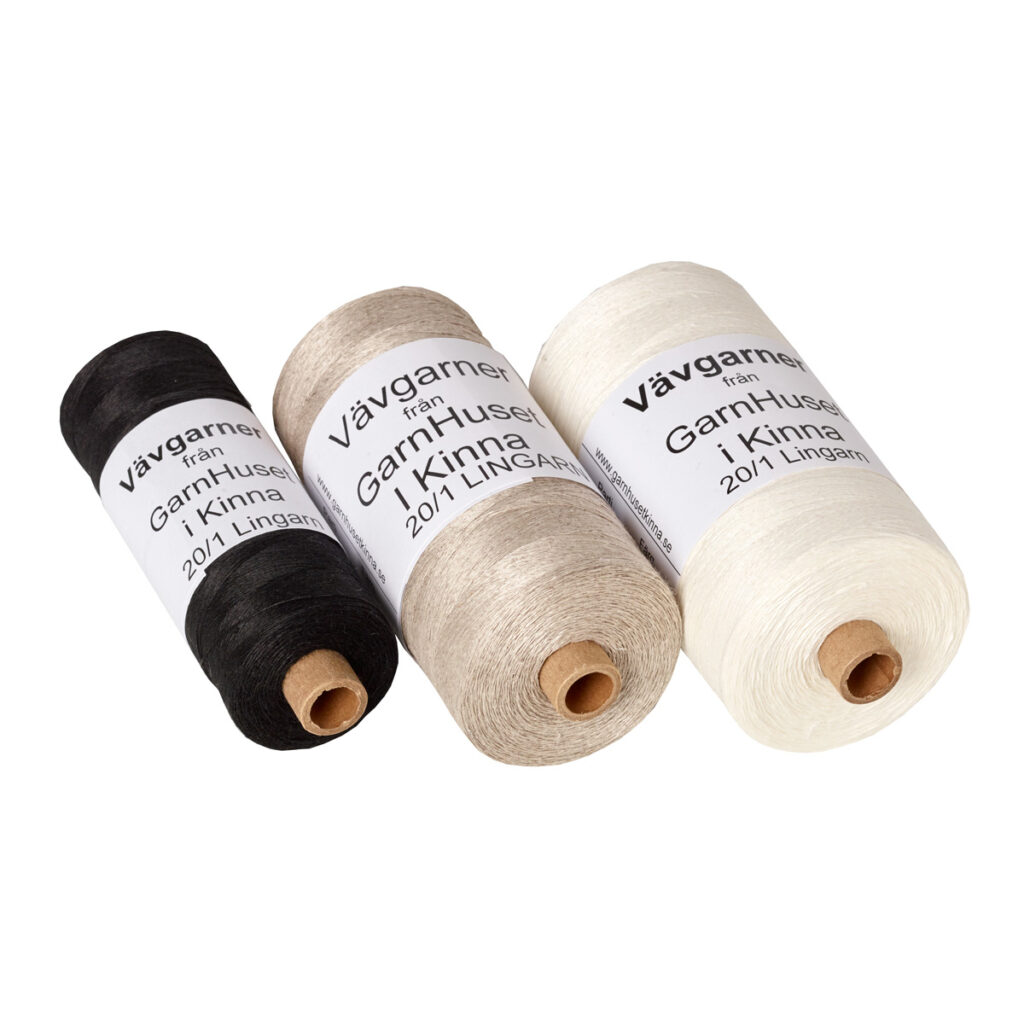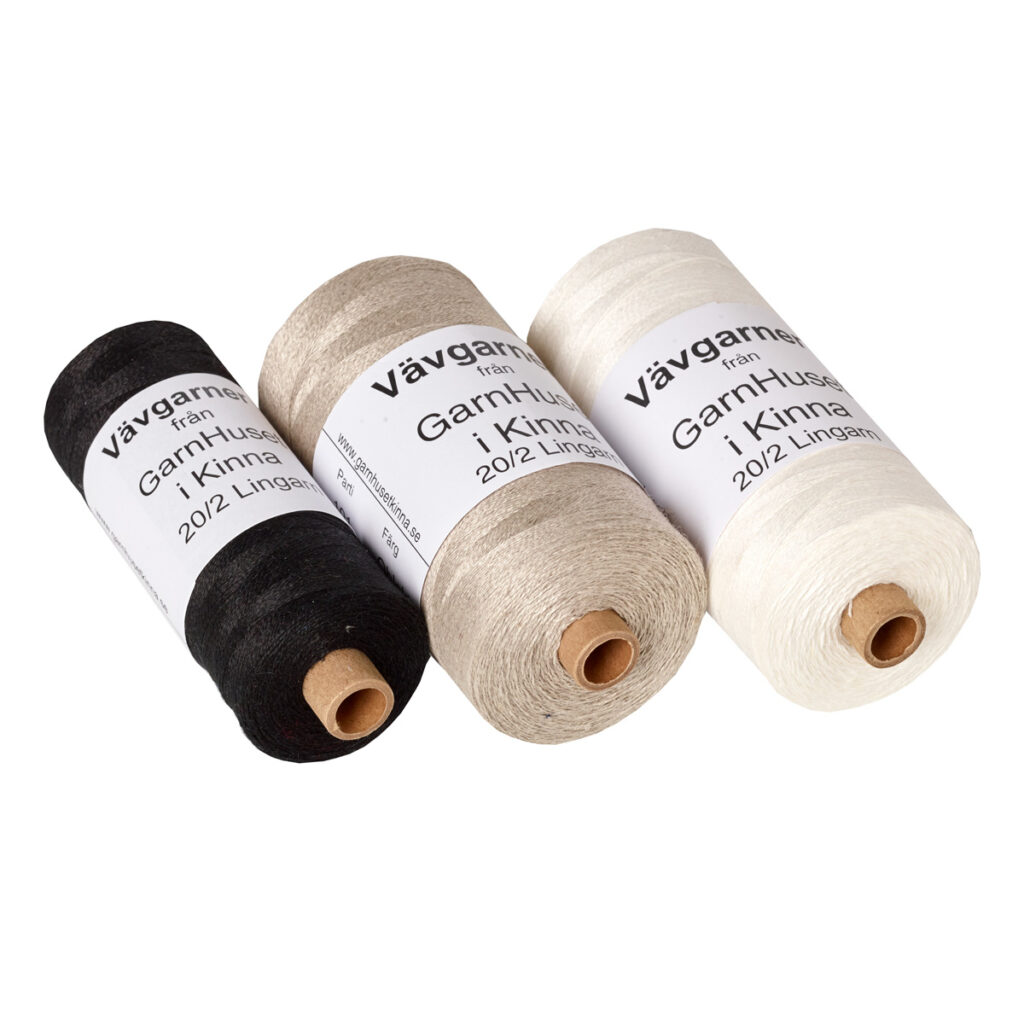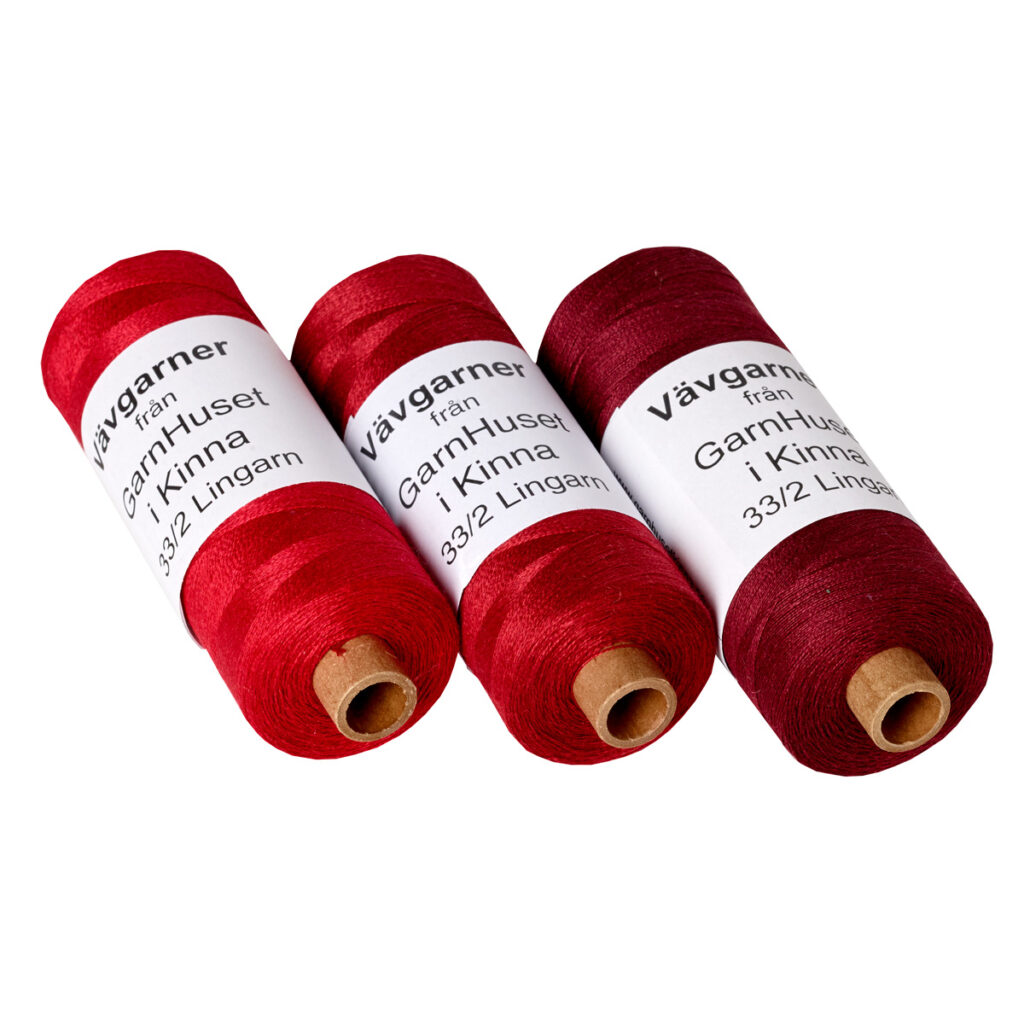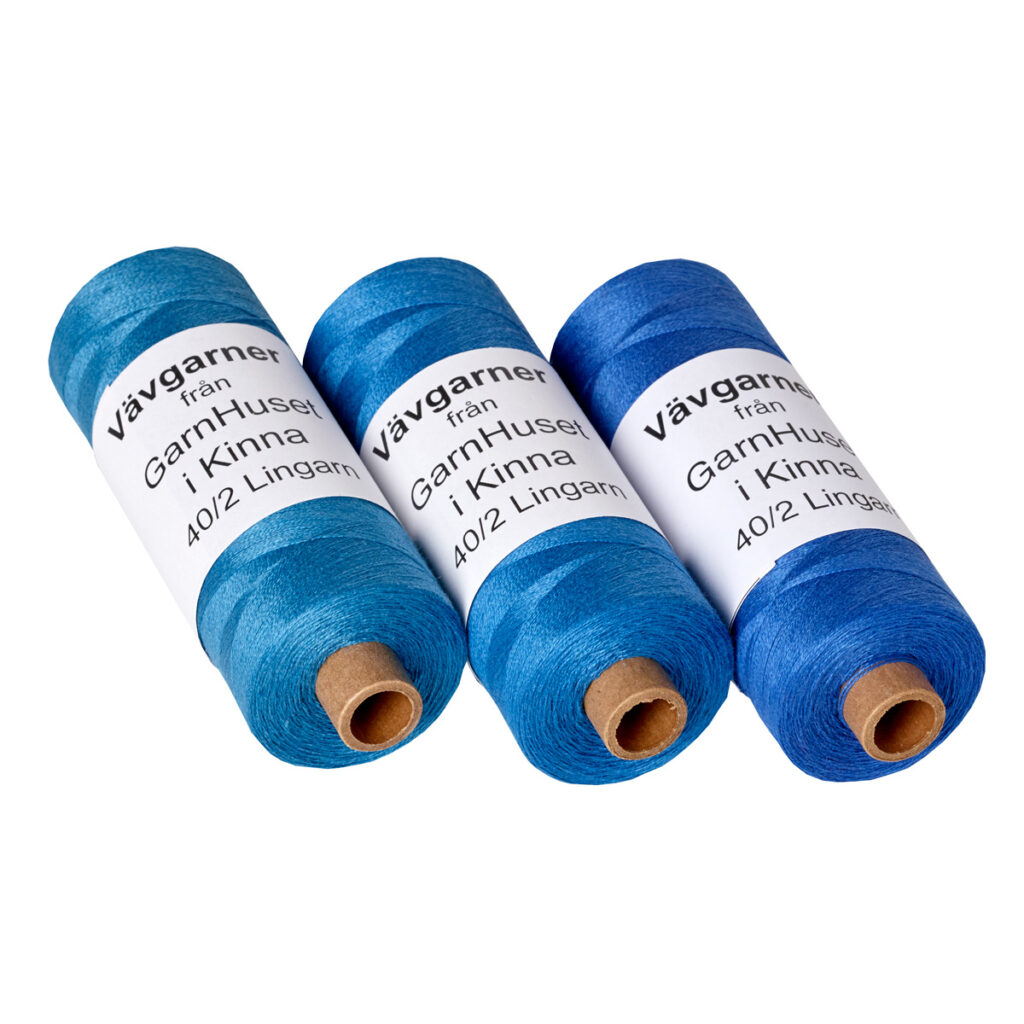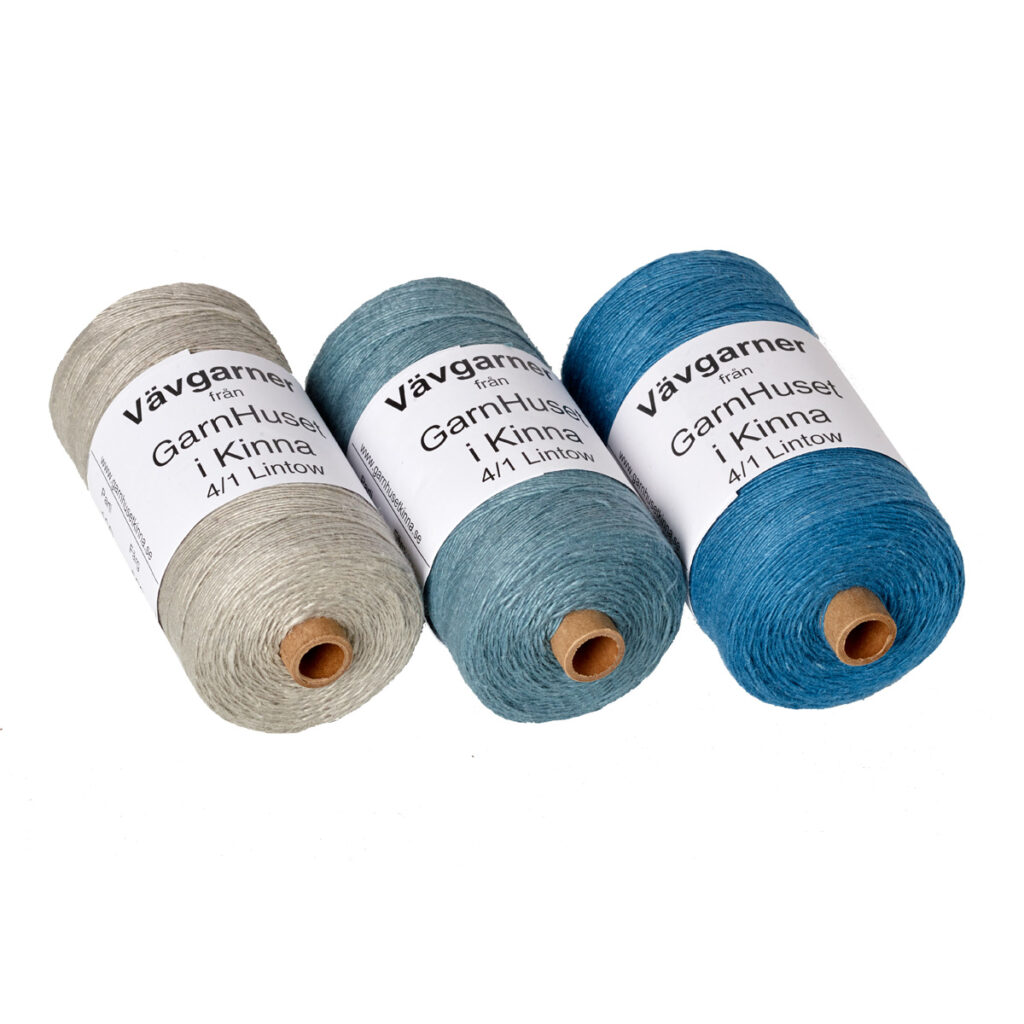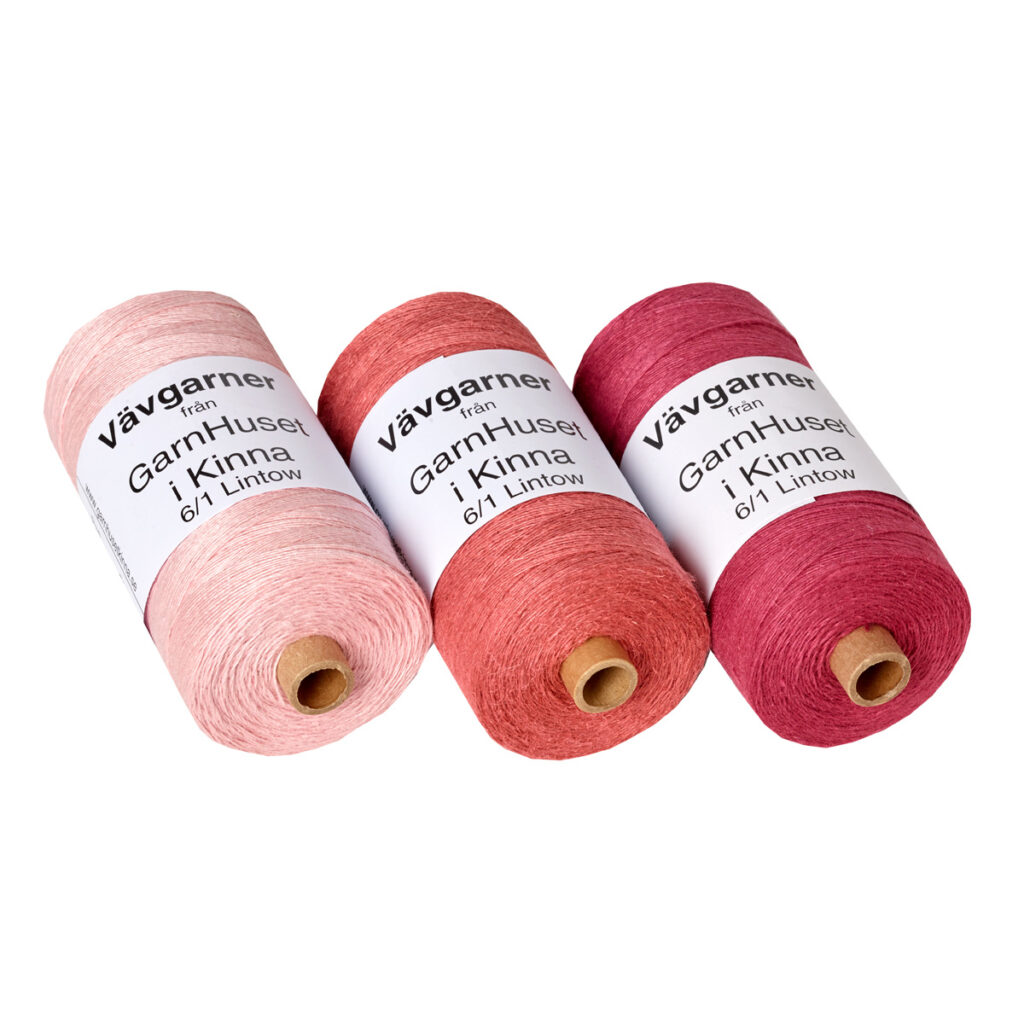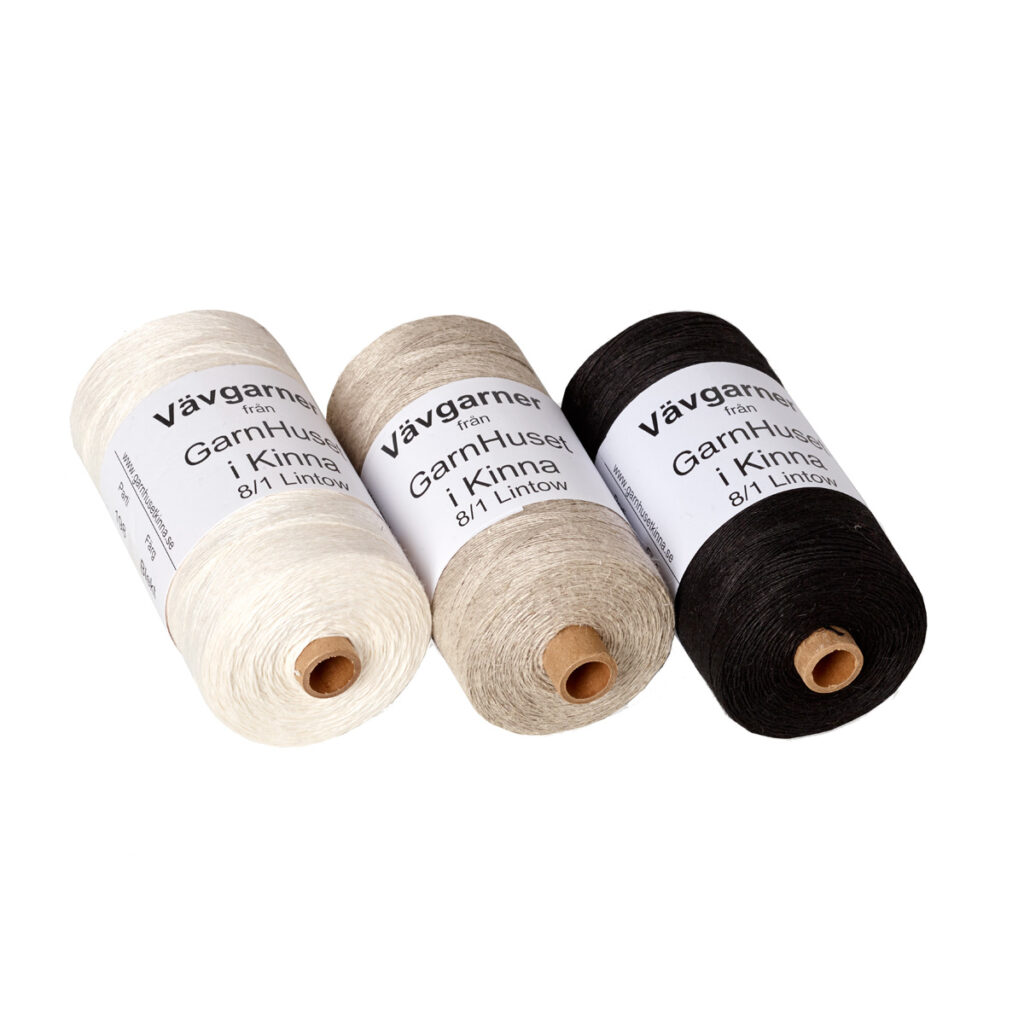The question we are most often asked is “what does the count mean on your yarns?”
Let’s try and answer that, taking our most popular cotton yarn as an example, Garnhuset Cotton 8/2NeC.
First we check the abbreviated unit, in this case Ne, which is sometimes also written NeC. It stands for Number Cotton but is usually just called “Cotton Count” and is a traditional unit going back to the days when cotton was spun as a cottage business. A price had to be agreed for the length of yarns that had been spun from a given amount of fibre, and 840 yards of cotton spun from a pound was defined as 1 count. So the cotton used to make this yarn was spun out to a thickness such that one pound yielded 8 x 840 = 6720 yards.
But if we unravel this cotton we find that there are two ends, twisted around each other to make a two ply yarn. Plying, also called folding, gives strength to the yarn. The “2” in our yarn’s count tells us that there are two plies.
A one pound weight of 8/2 Ne yarn therefore measures 6720 ÷ 2 = 3360 yards.
Tip
- The higher the count, the thinner the yarn. A 16/2NeC is approximately half the thickness of an 8/2NeC, and you will get twice the length for the same weight of yarn.
- But remember, each ply adds to the thickness. So an 8/4Ne yarn would be roughly as thick as two ends of 8/2Ne.
Here are some other yarn count systems:
| Count | Abbreviation | Description |
| Cotton | NeC or Ne or ECC | Number of 840 yd lengths per lb. This count is often also used for man-made cellulose fibres, e.g. Bamboo, Tencel. |
| Metric | Nm | Number of km per kg (or 1000m per kg) Can be used for any fibre |
| Woollen | YSW or NeS | Number of 256 yd lengths per lb Yorkshire Skein Weight. |
| Worsted | NeK or NeW | Number of 560 yd lengths per lb |
| Linen | NeL or LeA | Number of 300 yd lengths per lb This count is used for Flax, hemp and baste fibres. |
| Jute | Number of lb per 14,400yds | |
| Dewsbury | Number of yd lengths per oz |
Tip
If you look at the “Additional information” section of each of our products you will see that we show information about its count. “Traditional Count” will be cotton count, worsted count or linen count, as appropriate. We also show the metric count which is a useful means of comparing yarns made of different fibres.
Comparing and converting
Comparing yarns with the same count system is easy, but what if your yarns are labelled using different counts? You need to compare apples with apples, not apples with pears! The quickest way for our yarns is to look at the “Additional information” tabs and find the metric count for each yarn.
Converting between yarn counts is complicated, but we have a Yarn Count Converter on this website. Put in the count using the system you know, and the converter tells you the equivalent in seven of the most common yarn count system.
Our yarn count converter also allows you to enter the weight you have of the yarn to calculate its approximate length!
More help with counts
We’re happy to offer help with yarn counts and conversions, use the contact us form or send an email to [email protected] – if you have a label for your yarn include a photo!

